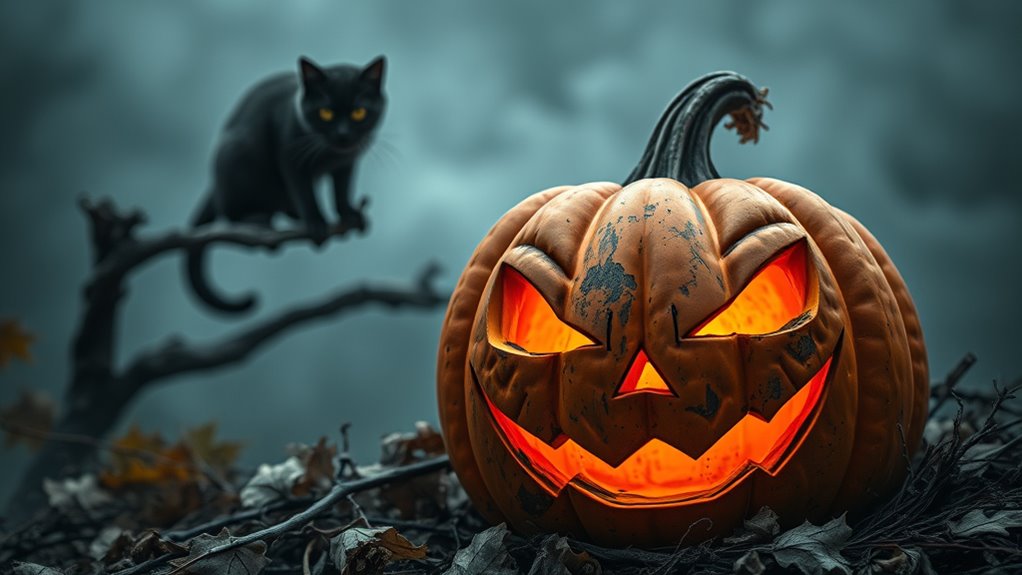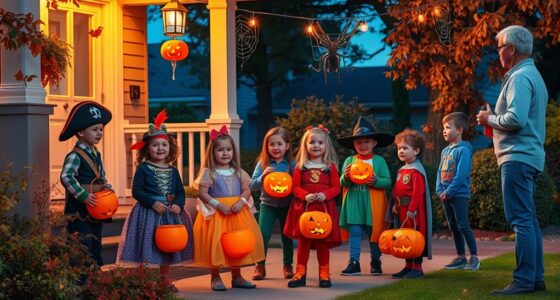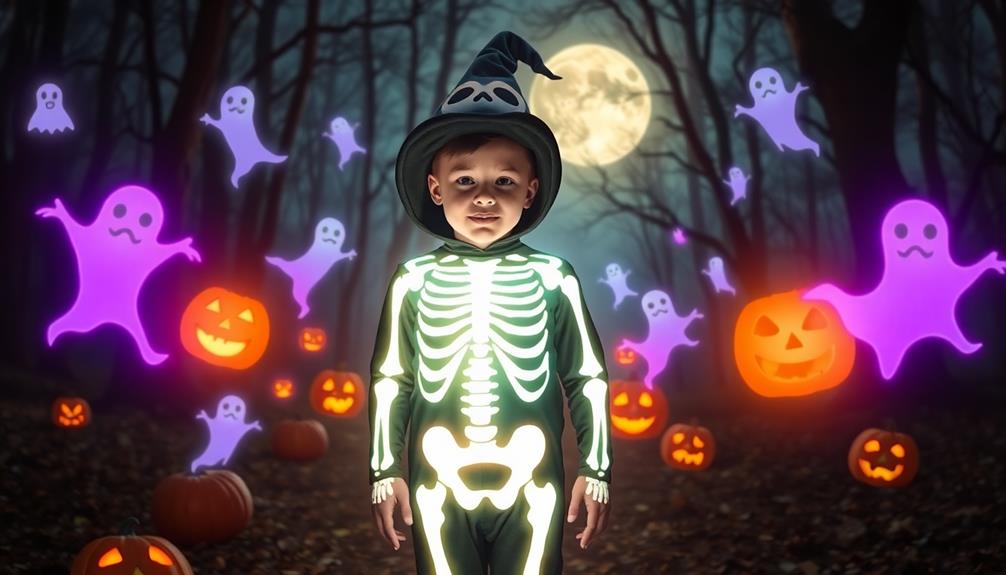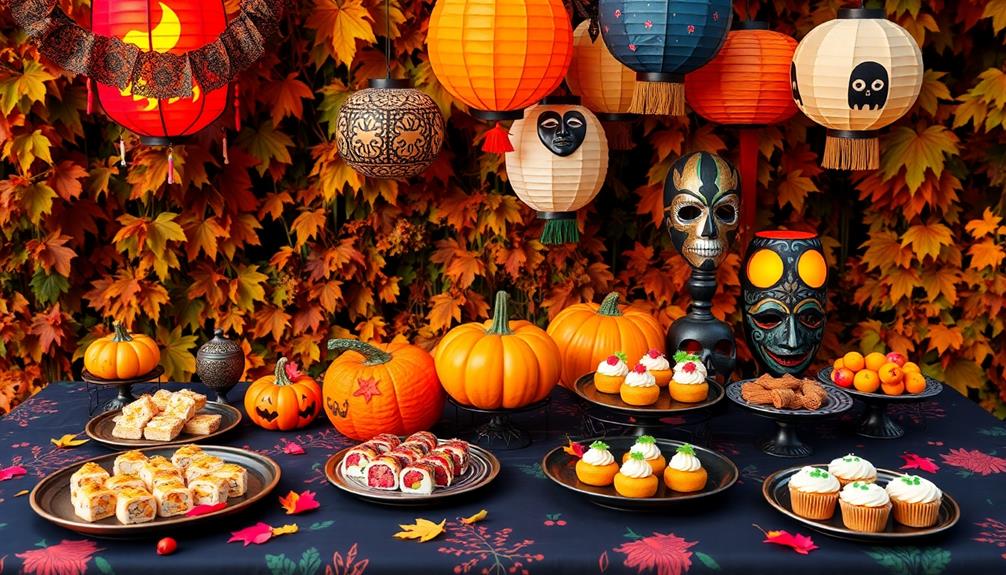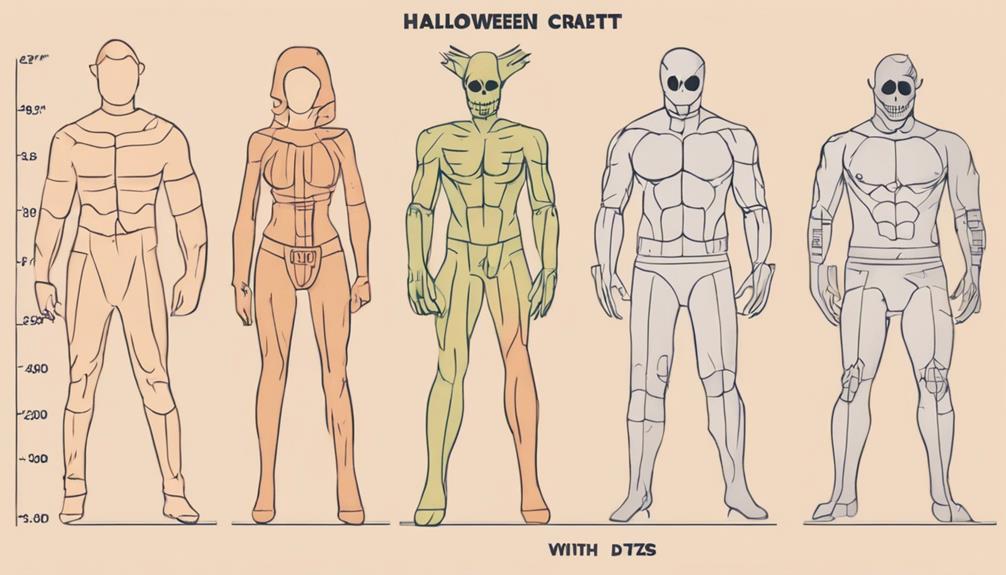Halloween symbols like jack o’ lanterns and black cats come from ancient stories, superstitions, and folk traditions designed to ward off evil spirits and explain mysterious happenings. Jack o’ lanterns originated from Irish folklore involving Stingy Jack, while black cats have long been linked to witches and superstition. These symbols reflect humanity’s efforts to protect themselves and confront fears rooted in history and legend. Exploring these origins reveals how they contribute to Halloween’s spooky charm.
Key Takeaways
- Halloween symbols like jack o’ lanterns originate from Irish folklore, where Stingy Jack’s story led to carving pumpkins for protection.
- Black cats are linked to superstitions from the Middle Ages, associated with witches, magic, and bad luck in Western cultures.
- The tradition of carving jack o’ lanterns evolved from turning turnips into lanterns to ward off evil spirits.
- Superstitions about black cats persisted through centuries, reflecting fears of supernatural forces and explanations for mysterious events.
- Both symbols stem from ancient beliefs about spirits, protection, and magic, shaping Halloween’s eerie and protective traditions.
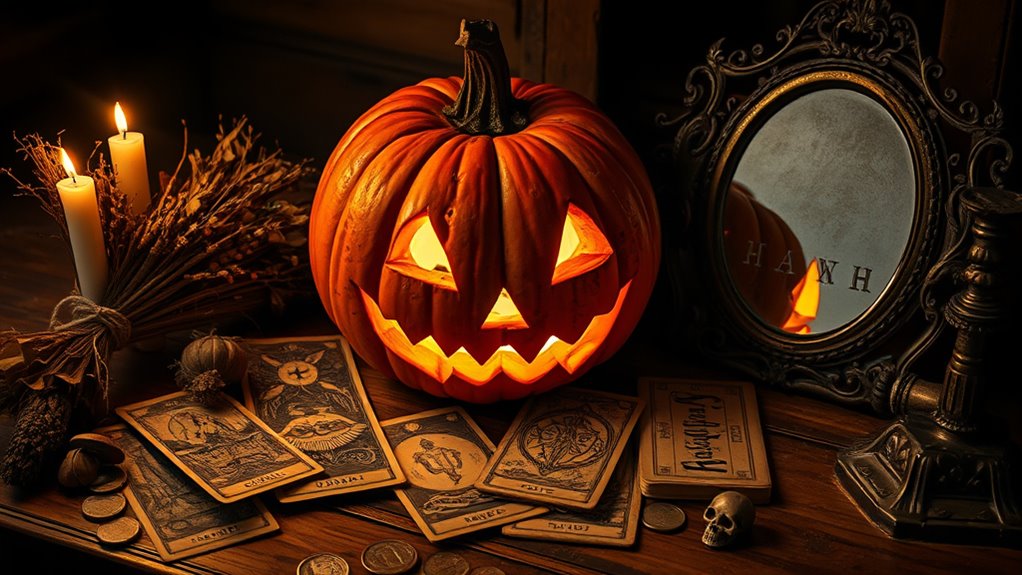
Halloween symbols and superstitions have deep roots that trace back centuries to ancient cultures and beliefs. You might wonder why certain symbols, like the jack o’ lantern or black cats, have become so closely associated with this spooky holiday. These traditions originate from stories and legends that were passed down through generations, shaping the way we celebrate today.
One of the most iconic symbols, the jack o’ lantern, has its origins in Irish folklore. According to legend, a man named Stingy Jack tricked the Devil and was condemned to wander the Earth with only a hollowed-out turnip lit by a burning coal inside. Over time, Europeans began carving faces into pumpkins instead of turnips, creating the glowing lanterns that now line doorsteps during Halloween. These lanterns were believed to ward off evil spirits and keep malevolent forces at bay, making them a practical and symbolic part of the holiday. The stories behind jack o’ lantern legends reveal how fear of spirits and the desire for protection fueled their popularity.
The origin of jack o’ lanterns lies in Irish folklore, symbolizing protection against evil spirits.
Black cats, on the other hand, have long been linked to superstitions about witchcraft and bad luck. During the Middle Ages, black cats were often thought to be witches’ familiars—animal companions that assisted in spellcasting. People believed that if a black cat crossed your path, it was an omen of misfortune or even the presence of witches nearby. These superstitions persisted through the centuries, morphing into the idea that black cats were symbols of witches’ power and dark magic. Ironically, in some cultures, black cats are considered good luck, but in Western superstitions, they continue to embody mystery and superstition. Understanding the roots of black cat superstitions helps you realize how fear and ignorance shaped perceptions of these animals, fueling stories that have persisted into modern Halloween lore.
In essence, these symbols and superstitions emerged from a mixture of folklore, fear of the unknown, and cultural beliefs. The jack o’ lantern legends and black cat superstitions serve as reminders of humanity’s long-standing attempt to ward off evil and explain the supernatural. As you celebrate Halloween, these stories remind you of their origins—how ancient fears transformed into symbols that now add to the holiday’s eerie charm. By understanding their history, you gain a deeper appreciation for the traditions that continue to thrill and mystify you each year.
Frequently Asked Questions
How Did the Jack-O’-Lantern Become a Halloween Symbol?
You might wonder how the jack-o’-lantern became a Halloween symbol. It stems from Celtic traditions and pumpkin folklore, where carved faces were believed to ward off evil spirits. Originally, turnips and gourds were used, but pumpkins became popular in America due to their size and ease of carving. Today, you see jack-o’-lanterns everywhere, symbolizing Halloween’s spooky spirit and honoring ancient beliefs to protect against dark forces.
Are Halloween Superstitions Rooted in Ancient Pagan Traditions?
You might wonder if Halloween superstitions come from ancient pagan rituals and beliefs. They definitely do, as many traditions stem from ancient times when people believed in spirits and supernatural forces. These superstitions evolved over centuries, blending pagan beliefs with Christian practices. So, when you follow Halloween customs, you’re actually participating in age-old traditions rooted in ancient beliefs and pagan rituals that aim to ward off evil spirits and ensure good fortune.
What Is the History Behind Wearing Costumes on Halloween?
Imagine attending a ghost story night in ancient Ireland, where masking was part of the fun. Today, you wear costumes on Halloween to hide your identity and join in festivities. This tradition evolved from mask traditions meant to ward off spirits. Over time, people dressed as ghosts, witches, and monsters to scare away evil. Your costume helps you embrace the spooky spirit, connecting you to centuries of Halloween history.
How Did Black Cats Become Associated With Halloween?
You might wonder how black cats became linked to Halloween. Superstitions about black cats, especially during the Middle Ages, fueled fears that they were witches’ familiars or shape-shifted witches themselves. Folklore surrounding black cats paints them as symbols of bad luck and evil. These beliefs spread across cultures, making black cats a spooky, mysterious part of Halloween traditions, often associated with witches and the supernatural.
Are There Cultural Differences in Halloween Symbols Worldwide?
You’ll be amazed at how diverse Halloween symbols are around the world! Cultural symbolism shapes these traditions, making each celebration unique. In some countries, pumpkins are replaced with different symbols, while others focus on spirits or ancestors. These global traditions reflect local beliefs and history, turning Halloween into a vibrant tapestry of customs. So, yes, cultural differences create a colorful mosaic of symbols that make Halloween celebrated worldwide in fascinating ways.
Conclusion
As you explore the origins of Halloween symbols and superstitions, you begin to see how ancient beliefs gently wove into modern traditions. These symbols whisper stories of times long past, subtly guiding your Halloween celebrations. Embracing these roots adds a layer of mystery and charm, inviting you to appreciate the playful, yet meaningful, dance between history and festivity. In this way, Halloween becomes a delightful tapestry of legends quietly echoing through the ages.
